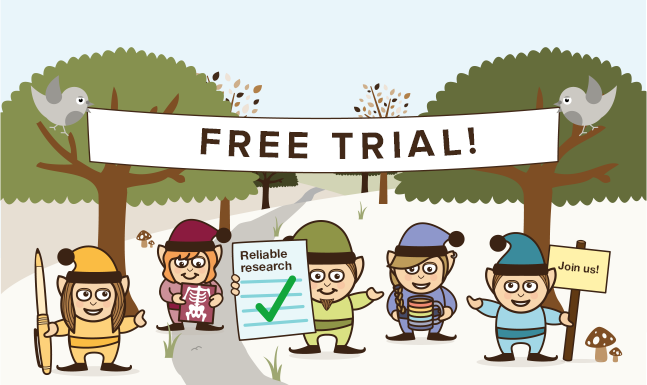
Intellectual and developmental disabilities (IDD) are usually present at birth and significantly affect the development of an individual physically, intellectually and/or emotionally. Prevalence rates of developmental disabilities are high, with approximately 1 in 6 children diagnosed in the USA, for a range of conditions including Attention Deficit Hyperactivity Disorder and Autism.
These conditions alone negatively contribute to individuals’ wellbeing and also healthcare and societal costs.
There is little research that has examined the presence of IDD in adulthood in combination with substance-related and addictive disorders (SRAD). The available evidence suggests that individuals with IDD-plus-SRAD are likely to be younger males, diagnosed with milder disabilities. Furthermore, they are usually at an increased risk of the negative consequences attributed to substance use such as aggression, risk taking and criminal behaviour. A substantial percentage of IDD-plus-SRAD individuals are also likely to have a comorbid psychiatric disorder (42-54%). However, these findings are based on small studies with substantial heterogeneity. As such, the accuracy of these prevalence rates has come into question.
In a recent population cohort study published in BMJ Open, the authors set out to describe the prevalence of SRAD in adults with IDD. They also set out to compare sociodemographic and clinical characteristics of individuals with IDD-plus-SRAD to individuals with IDD or SRAD only.

This study aimed to measure how widespread substance misuse is in people with intellectual and developmental disabilities.
Methods
The population study used data from the Canadian Health Care Research and Development Disabilities cohort. This data set is comprised of 66,484 individuals with IDD.
This was linked to the Ontario health administrative records and disability income support records, which captured all healthcare users from Ontario’s universal healthcare system.
Three groups were created for the purpose of the study:
- An IDD only group
- An SRAD only group
- An IDD-plus-SRAD group
The three groups were compared on sociodemographic variables (age group, sex, rurality and neighbourhood income quintile) and clinical variables (psychiatric disorders, chronic physical illness and comobidity).
Cohen’s d effect size (a standardised difference between two means, irrespective of sample size) was used to determine whether observed differences across groups were meaningful.
An effect size of 0.2 which is representative of a small effect was chosen as meaningful; furthermore 95% confidence intervals were computed with the requirement that the absolute value of the confidence intervals must not intercept d = 0.2.
Results
Prevalence
- Of the IDD cohort, 4,220 individuals met the definition for substance-related and addictive disorders (SRAD), representing a prevalence rate of 6.4%
- Of adults without IDD, the prevalence of SRAD was 3.5%.
Sociodemographic characteristics
- Over 40% of the IDD-plus-SRAD group lived in the poorest neighbourhood quintile compared to less than 30% in the IDD group (Cohen’s d = 0.28; 95% CI 0.24 to 0.31) and SRAD-only group (Cohen’s d = 0.38; 95% CI 0.34 to 0.41)
- There was no meaningful difference between the IDD and SRAD only groups (Cohen’s d = 0.10; 95% CI 0.09 to 0.12).
Clinical characteristics
- After adjusting for age and sex, the overall prevalence of any psychiatric disorder was greater in the IDD-plus-SRAD (78.8%) compared to IDD only group (41.0%; Cohen’s d = 0.92; 95% CI 0.88 to 0.97) and also the SRAD only group (50.6%; Cohen’s d = 0.71; 95% 0.67 to 0.75)
- These results were similar across all psychiatric disorders separately including, schizophrenia, anxiety, depressive and bipolar disorders.
Adjusting for age and sex demonstrated that the IDD-plus-SRAD group had higher prevalence of chronic obstructive pulmonary disease (COPD), Asthma, Congestive Heart Failure and Morbidity than both the IDD and SRAD only groups (Cohen’s d ranging from 0.29 for COPD to 0.59 for Congestive Heart Failure).

This research suggests that rates of substance-related and addictive disorders are higher among people with intellectual and developmental disabilities.
Discussion
The results from this study demonstrate a prevalence of SRAD amongst adults with IDD of 6.4%, compared to 3.5% when IDD is absent. Furthermore, individuals who suffer from both IDD-plus-SRAD were more likely to live in the poorest neighbourhood quintiles compared to SRAD or IDD only. As well as socioeconomic status, individuals with IDD-plus-SRAD were also much more likely to have a comorbid psychiatric or physical disorder. On top of this, the prevalence rates were much higher than previously reported (79% compared to 42-54%).
The implications of this study suggest that substance misuse and addiction are significant problems in people with intellectual and developmental disabilities and that a combination of IDD-plus-SRAD increases treatment complexities due to substantial covariance with physical and psychiatric conditions.
The authors suggest that:
Services and supports that prevent, identify, treat and manage the significant mental health and addiction problems of adults with IDD need to be developed and integrated into their programmes of care.
Caption: The authors call for improved addiction services for people with intellectual and developmental disabilities.
Strengths and limitations
There are several strengths to the study. These include:
- The large cohort which was able to capture almost the entire population of a single geopolitical area
- The use of effect sizes to examine the meaningfulness rather than the statistical significance of the comparisons. These should be commended as large samples inflate statistical significance (however, one could say that the effect size chosen as meaningful may be arbitrary!).
There are also some limitations:
- The administrative data used are not usually collected for research purposes, and as such, important variables such as poverty and illness severity were not available
- Whilst the study examined population data from one specific area (Ontario), the results may not be generalisable to culturally different areas or areas with different health and social service systems.
Conclusions
Substance-related and addictive disorders (SRAD) present a significant problem for individuals with intellectual and developmental disorders (IDD). People affected by both are much more likely to have a psychiatric and/or physical disorder.
This study demonstrated that the prevalence rates are much higher than first thought and attention should be paid to increasing the recognition of substance misuse and addiction problems by healthcare and social service providers.

We need to get better at identifying, preventing and treating addiction problems in people with intellectual and developmental disabilities.
Links
Primary paper
Lin E, Balogh R, McGarry C. et al (2016) Substance-related and addictive disorders among adults with intellectual and developmental disabilities (IDD): an Ontario population cohort study. BMJ Open, 6; e011638
Other references
Boyle CA, Boulet S, Schieve LA. et al (2011) Trends in the prevalence of developmental disabilities in US children, 1997-2008. Pediatrics, 127; 1034-42 [PubMed abstract]
Carroll-Chapman SL, Wu L. (2012) Substance Abuse among Individuals with intellectual disabilities. Research in Developmental Disabilities, 33; 1147-56 [PubMed abstract]


Substance misuse and addiction in people with intellectual and developmental disabilities https://t.co/KZkN1B50TT
Substance misuse and addiction in people with intellectual and developmental disabilities https://t.co/92OYphxt5h via @sharethis
Today @ajj_1988 on substance-related & addictive disorders in adults with intellectual & developmental disabilities https://t.co/MLBR4UbsPh
Substance misuse: people with intellectual & developmental disabilities https://t.co/1PeKtS8Ywt
⬆️ rates of substance misuse & addiction in ppl w intellectual & developmental disabilities
Important lunchtime read
https://t.co/MLBR4UbsPh
Addiction problems in people with intellectual & developmental disabilities
MORE WORK NEEDED!
https://t.co/MLBR4UbsPh
Don’t miss:
Substance misuse & addiction in people with intellectual & developmental disabilities
https://t.co/MLBR4UbsPh
Substance misuse and addiction in people with intellectual and developmental disabilities https://t.co/sDCSxHsvQQ via @sharethis
Substance misuse and addiction in people with intellectual and developmental disabilities
https://t.co/tCpTjlXAHM https://t.co/V3Kd4VUSlN